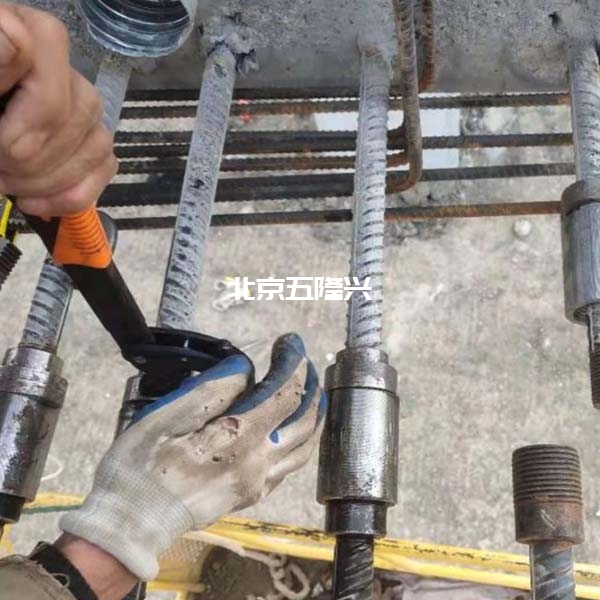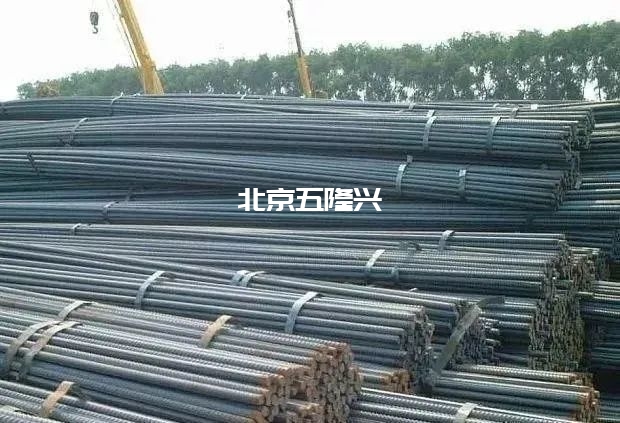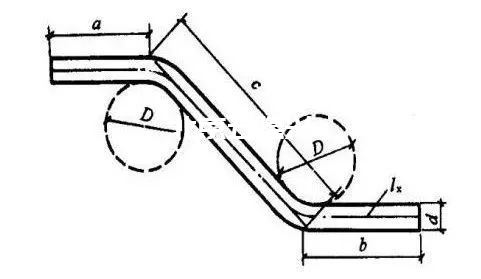In reinforced concrete structure engineering, there are many reinforcements with different shapes and functions, such as longitudinal reinforcement, distribution reinforcement, tie bar, stirrup, bending reinforcement, erection reinforcement, horse stool reinforcement, etc. these reinforcements together form the reinforcement skeleton of structural members and play their respective roles.
 .
.
However, the reinforcement transported into the construction site from the reinforcement manufacturer is not like this. All bars are tied together in a straight line with equal length, such as 9m and 12M, as follows:

There is also the once common circular bar, mainly plain round steel bar, which is not commonly used now.
Therefore, it is necessary to process the incoming straight-line reinforcement into the shape we need, that is, the shape required by the reinforcement drawing. At this time, there must be bending, overlapping, welding and cutting of reinforcement. How many incoming reinforcements are needed to process this formed reinforcement, that is, how long the formed reinforcement needs to be in a straight state, so that the incoming reinforcement can be accurately cut.
This is a very complicated job. This work is called reinforcement blanking.
In the reinforcement blanking, the most complex influence on the reinforcement length is the reinforcement bending.
As a building material with good deformation performance, the bending of reinforcement is characterized by the shortening of the endothelium at the bending, the elongation of the outsourcing size, and the size of the centerline remains unchanged (as shown in the figure below). Therefore, as long as we grasp the size of the centerline, we can get the blanking length of reinforcement.
If this problem is clarified, the blanking length can be calculated accurately. There are three main formulas for calculating the blanking length of reinforcement, which correspond to straight reinforcement, bent reinforcement and stirrup respectively. Let’s introduce them one by one below:
Straight reinforcement
Blanking length of straight reinforcement = member length – thickness of protective layer + increased length of hook + overlapping length of reinforcement
In the above formula, the component length, the thickness of the protective layer and the overlapping length of the reinforcement can be accurately obtained from the structural construction drawings, the code for acceptance of construction quality of concrete structures and the 16g101 atlas. The increased length of the hook needs to be combined with the “shortening of the endothelium at the bend, elongation of the outsourcing size, and the size of the centerline remains the same” Calculate according to the provisions of 16g101 atlas.
First, determine the inner diameter D of the bending arc and the length of the straight section of the hook (the diameter of the reinforcement is d).
For plain round reinforcement, the end is concrete protective layer, the inner diameter D is generally 2.5D, and the straight section of hook is 3D, as shown in the following figure (180 degree semicircular hook):
In this way, it can be calculated that the increased length of the hook is 6.25d. As shown in the figure below:
Similarly, when the hook angle is 90 degrees (straight hook) and 135 degrees (oblique hook), the increased length of the hook can also be calculated as 3.5D and 4.5d respectively.
For 335mpa and 400MPa ribbed reinforcement, if there is no special illustration, the anchorage length is sufficient. The increased length of hook and the thickness of concrete protective layer are not considered, and the anchorage length can be directly considered. If it is necessary to make a hook, generally make a 135 degree or 90 degree hook, and the inner diameter D is generally not less than 4D. The straight section of the hook shall meet the design requirements, so the increased length of the hook can also be calculated. As shown in the figure below:
After calculating the increased length of the hook, it is easy to calculate the blanking length of the straight reinforcement.

Bending reinforcement
Blanking length of bent reinforcement = length of straight section + length of inclined section – bending adjustment value + increased length of hook + overlapping length of reinforcement
For the blanking calculation formula of bent reinforcement, the overlapping length of reinforcement can also be determined through drawings, specifications and atlas. The calculation method of the increased length of hook has been introduced earlier. The key to understand is the first three items: straight section length + inclined section length – bending adjustment value:

In fact, this is determined according to the bending characteristics of reinforcement introduced earlier. The length of straight section + the length of inclined section is the outer length of reinforcement, and the bending adjustment value is the difference between the outer length of reinforcement bending and the axis length. The difference between the two is the central axis length of reinforcement after bending, that is, the blanking length. As shown in the figure below:
Stirrup
Stirrup blanking length = stirrup perimeter + stirrup adjustment value
In fact, this formula is very general. Personally, I feel a little rogue, because I simply don’t know how to calculate it. Let’s simply put aside this formula and analyze it in detail.
That is, there are two kinds of stirrup perimeter: one is skin perimeter = 2 (a + b); One is endothelial circumference = 2 (c + e).
Then, according to the requirements of specifications and standard atlas, the basic situation of stirrups is as follows:
(1) The stirrup is generally plain round reinforcement, and the inner diameter of the bending arc can be 2.5 times of the diameter of the stirrup and not less than the diameter of the stressed reinforcement.
(2) Bending angle of stirrup hook: it shall not be less than 90 degrees for general structures and 135 degrees for structures with seismic requirements (this is most cases).
(3) The length of the straight part of the stirrup after bending: for general structures, it can be no less than 5 times of the stirrup diameter, and for structures with seismic requirements, it can be 10 times of the stirrup diameter.
After clarifying the above requirements, combined with the bending adjustment calculation method discussed above, the blanking length of stirrups under different conditions can be obtained. An elder made a detailed analysis on this, and the analysis results are as follows (D is the diameter of stirrup):
Seismic structure: blanking length of 135 degree hook stirrup = 2 (c + e) + 26.5d or 2 (a + b) + 18.5d.
General structure: blanking length of 135 degree hook stirrup = 2 (c + e) + 16.5d or 2 (a + b) + 8.5d.
I think the analysis result is quite accurate.
The above is the basic method of reinforcement calculation under different conditions. In the actual operation, it is also necessary to analyze the specific situation, be familiar with the drawings, specifications and standard atlas, be rigorous and serious, and calculate without omission, so as to do a good job in the blanking calculation of reinforcement accurately.
 五隆興科技發(fā)展有限公司
五隆興科技發(fā)展有限公司




